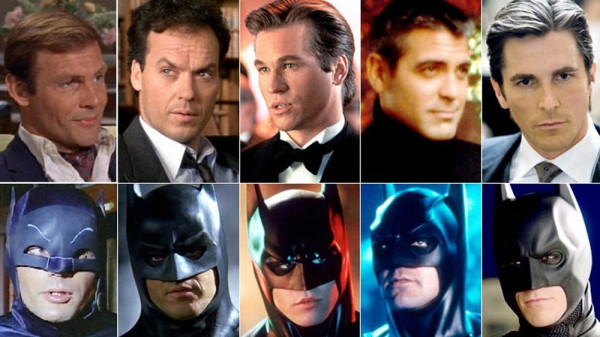With the release of Batman v Superman: Dawn of Justice, the caped crusader has now appeared in eight major motion pictures in the last 26 years alone.
Despite an eight year gap following Batman & Robin, Batman has hit the big screens almost every three years. Batman has always been one of pop cultures most recognisable characters and his tenure in movies has help to cement this.
Batman is a flexible character, which has allowed him to be portrayed in different ways. Batman (1966) was the introduction of the character for most people and so the character became a light, fun, pop character. Early Batman comics and those that followed in the 80s were darker, crime stories and so, people who preferred this take on Batman resented the original Batman film and TV show.
This paved way for Tim Burton’s Batman (1989) that depicted death, crime and drama without the silliness and joy. Burton’s Batman Returns would be violent and sexual, but would incorporate much of the over-the-top crimes and gimmicks most associated with Batman (1966). This allowed the next two films in the series to steer towards a cartoon-like Batman in live-action cinema.

The Dark Knight trilogy by Christopher Nolan began eight years after the last Batman instalment. These films were crime thrillers and focused on giving context to Batman and his world. While they had optimism and weren’t overly violent or dark, the inclusion of real issues and tension steered them in a different direction than the pop side of Batman.
Now, Batman v Superman focuses on the ultra dark and gritty take, following a bleak and violent version of Batman, with little hope and a lot of anger. Despite this, the next Batman film to be released in cinemas will be The Lego Batman Movie, which will feature the version of the character from The Lego Movie that was a comedic portrayal on the character.
Batman’s flexibility allows him to adapt to the times and audiences. When comic books were seen as something for children, live-action Batman was a cartoon character. As superheroes matured, Batman did as well. We live in a world that has Nolan’s films, Tim Burton’s film, the Batman 1966 TV show and various animated series that are all completely different in tone and execution, but work in their own way.

This adaptability of Batman comes through in other media. Take for instance the Arkham video games or Mr Smith Casino’s numerous slot games based on the character and featuring familiar icons. Batman, his logo, his supporting cast are all things people have come to know and love. His costume, his villains, his gadgets, the Batmobile, bat signal, his supporting cast and more are all universally identifiable elements, something the slots feature. This makes them more interesting, more exciting and unique, allowing Batman to be enjoyed in any form.
The allure of the character, his enemies and allies and explosive action can be used in entertainment in anyway and provide a true take on the character. Whatever the future holds, Batman will be different but remain popular.

